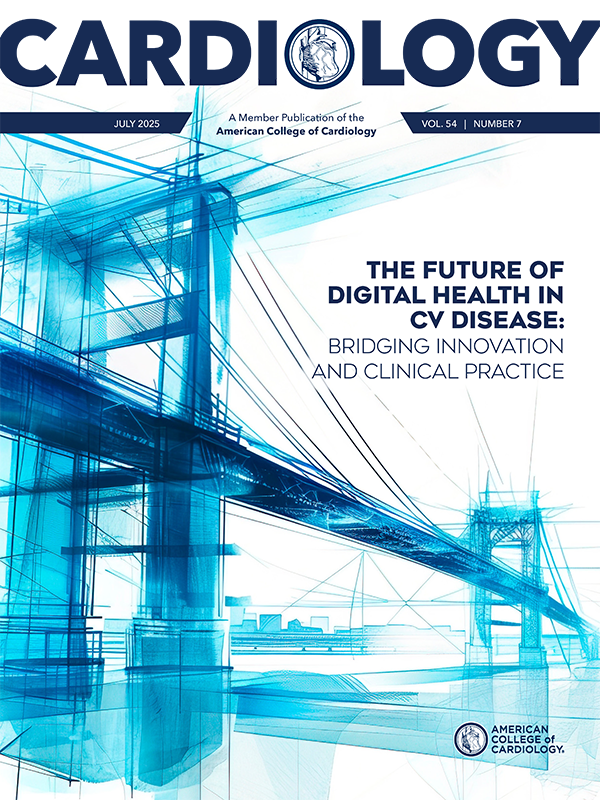Focus on Intervention | EUROPCR and SCAI 2025: Key Trials Shaping Interventional Care

The 2025 editions of EuroPCR in Paris and SCAI in Washington, D.C., delivered a robust series of pivotal clinical trials and studies that collectively signal a shift in the management of coronary and structural heart disease. From innovative TAVR platforms to personalized imaging strategies and redefined pharmacotherapy, here are top takeaways from both meetings.
Structural Heart Interventions: New Frontiers in TAVR
Myval THV System Shows Promise
The LANDMARK trial evaluated the Myval TAVR system – a balloon-expandable valve developed in India – as a cost-effective alternative to existing transcatheter valves from Medtronic and Edwards. In a randomized, noninferiority design enrolling 384 patients, Myval met all primary endpoints, including safety and valve performance metrics.
One standout finding was the significantly lower need for post-dilatation in the Myval group (38 patients vs. 80 in the comparator group). This reduction may be attributed to the valve's finer sizing increments (1.5 mm), enabling better anatomical matching. In regions facing the dual burden of high cardiovascular disease prevalence and constrained resources, Myval may offer a scalable and affordable solution without compromising quality.
First TAVR vs. SAVR Study in Younger, Low-Risk Patients
In a groundbreaking move, NOTION-2 targeted a younger cohort with severe aortic stenosis – many with bicuspid anatomy. Unlike earlier trials like PARTNER 3 and Evolut Low Risk, which largely excluded bicuspid valves and older patients, NOTION-2 directly compared TAVR and surgical aortic valve replacement (SAVR) in low-risk patients under 75 years old.
At one year, TAVR and SAVR demonstrated similar composite outcomes of death, stroke or rehospitalization (10.2% vs. 7.1%). However, TAVR had a higher incidence of nondisabling stroke and paravalvular regurgitation – most attributed to bicuspid valve cases. Permanent pacemaker rates were higher with TAVR, while new-onset atrial fibrillation and major bleeding favored TAVR. Importantly, TAVR patients experienced more rapid symptomatic and quality-of-life improvements, reinforcing its appeal for select low-risk populations.
Long-Term Outcomes of TAVR vs. SAVR
Adding a broader context, a meta-analysis of seven trials (n=7,785) with an average follow-up nearing six years reinforced the durability and safety of TAVR. There was no significant difference in mortality or disabling stroke between TAVR and SAVR across all surgical risk groups. Self-expanding valves showed lower gradients but higher pacemaker implantation rates than balloon-expandable valves. This meta-analysis strengthens the argument for expanding TAVR indications, though device selection remains key.
Coronary Interventions: Precision, Imaging and Personalization
OCT vs. Angiography in Calcified Lesions
CALIPSO was a prospective, multicenter investigation into the role of optical coherence tomography (OCT) in guiding PCI for moderate-to-severe calcified coronary lesions. Among 134 patients, those in the OCT-guided arm had significantly better stent expansion and geometry, with a higher final minimal stent area (6.5 mm2 vs. 5.0 mm2, p<0.001). Notably, OCT-guided interventions used more intravascular lithotripsy, reflecting more tailored lesion preparation.
Despite better procedural metrics, the trial stops short of confirming clinical outcome superiority, signaling the need for long-term follow-up. Still, CALIPSO underscores the growing relevance of imaging-based PCI strategies in complex lesion subsets.
Antiplatelet Strategy Post DCB in ACS: A Stepwise Approach
In a first-of-its-kind randomized trial conducted at 41 sites in China, investigators explored de-escalated antiplatelet therapy in acute coronary syndrome (ACS) patients treated with drug-coated balloons (DCB). Over 1,900 patients were randomized to one-month dual antiplatelet therapy (DAPT) followed by five months of ticagrelor monotherapy vs. 12 months of standard DAPT.
The results showed noninferiority in the composite endpoint of death, myocardial infarction, stroke, revascularization and major bleeding. This tailored approach could lead to guideline updates in managing DCB patients, who have historically lacked antiplatelet strategy evidence.
Rethinking DAPT Post TAVR
TRITAVR offered essential real-world data on antiplatelet therapy post-transfemoral TAVR in patients without indications for oral anticoagulation. The findings were striking: patients on DAPT had higher mortality, bleeding and ischemic event rates compared to those on single antiplatelet therapy (SAPT).
More in the JACC Journals
Dig deeper into EuroPCR with science published across the JACC Journals.
The results challenge the current variability in post-TAVR antiplatelet prescriptions and call for more defined protocols, possibly favoring SAPT as the standard in uncomplicated cases.
CTO PCI Outcomes: The Value of Stenting
In a retrospective, single-center study, the benefits of stenting in chronic total occlusion (CTO) PCI were evaluated. Patients who underwent successful stenting showed a significantly lower risk of cardiovascular death at six months and fewer cardiac arrests at one year compared to nonstented counterparts.
While early mortality and complication rates were similar, the data support the use of complete revascularization strategies, especially in symptomatic or high-risk patients.
Protecting the Operator
Addressing a different kind of risk – occupational injury – the ERGO-CATH study evaluated orthopedic strain in interventional cardiologists using traditional lead vs. lead-free protection systems. Despite comparable time spent in cervical axial rotation and thoracic flexion, the use of lead-free systems promises to reduce long-term spinal stress. As physician wellness gains prominence, such findings may fuel broader adoption of ergonomic innovations in catheterization laboratories.

This article was authored by M. Chadi Alraies, MD, FACC, medical director of the cardiac catheterization laboratory, cardiac rehabilitation, and interventional cardiology research at Detroit Medical Center, Harper University Hospital, in Michigan.
Clinical Topics: Cardiac Surgery, Invasive Cardiovascular Angiography and Intervention, Aortic Surgery
Keywords: Cardiology Magazine, ACC Publications, Transcatheter Aortic Valve Replacement, Percutaneous Coronary Intervention, Mitral Valve
